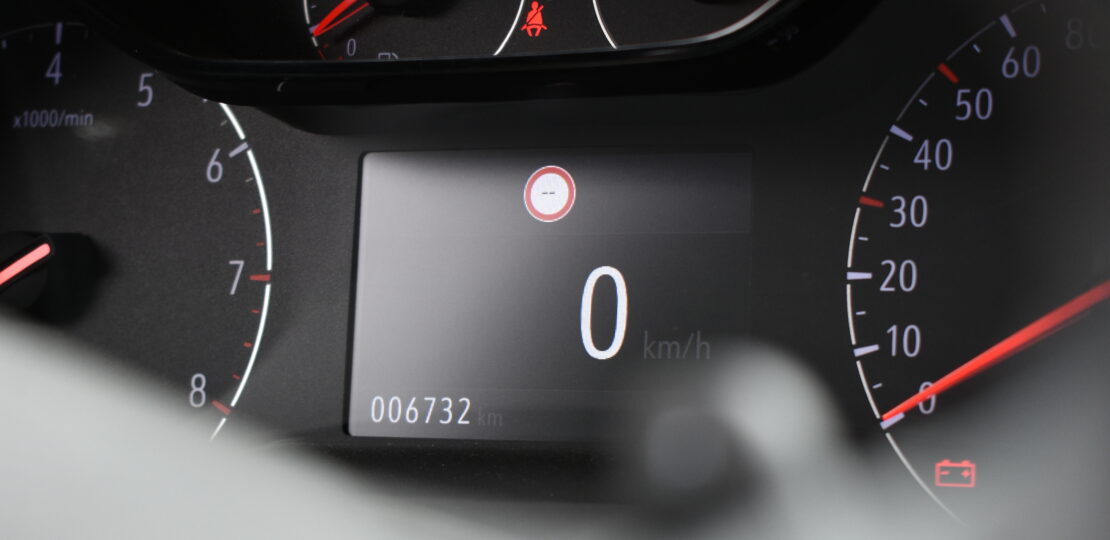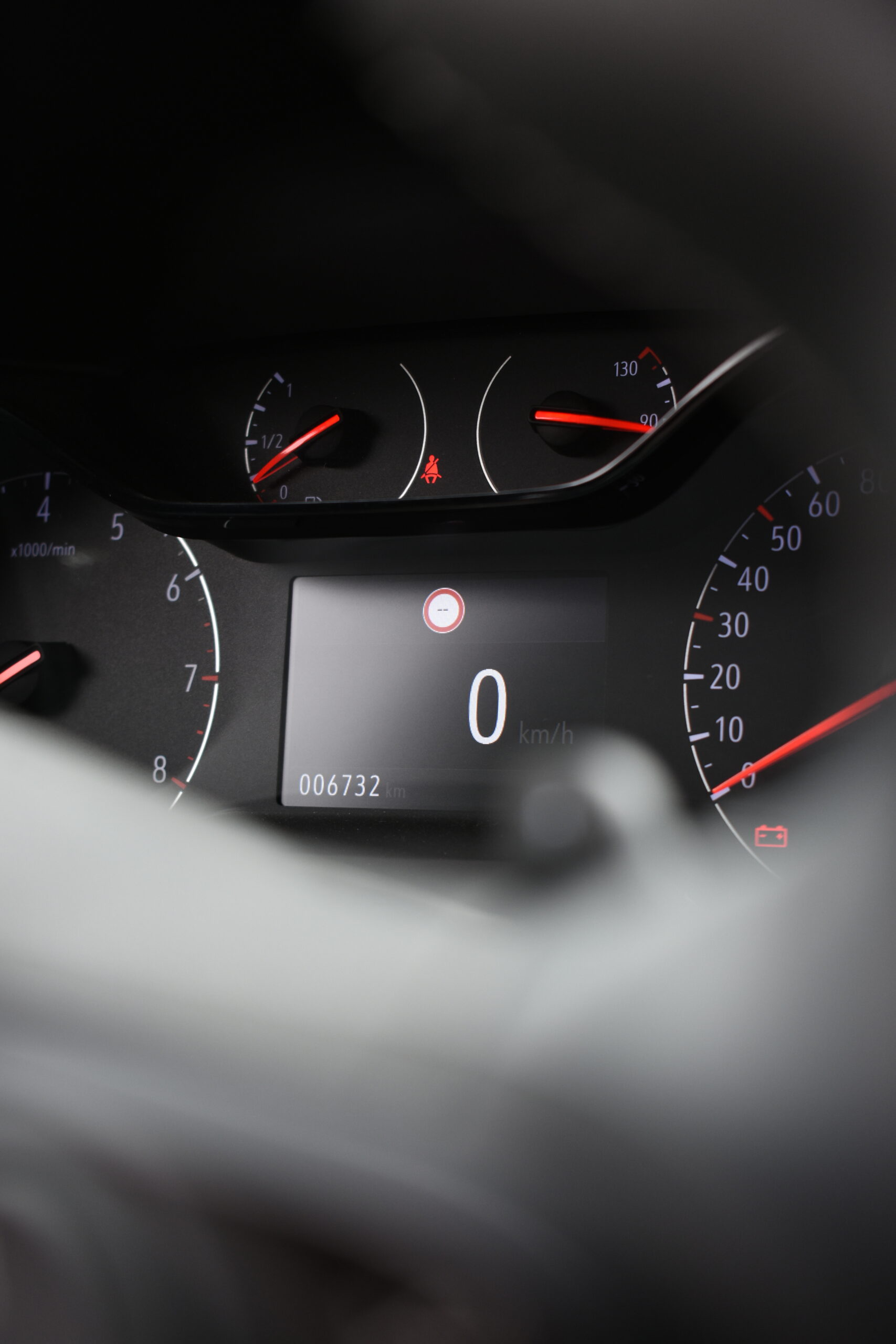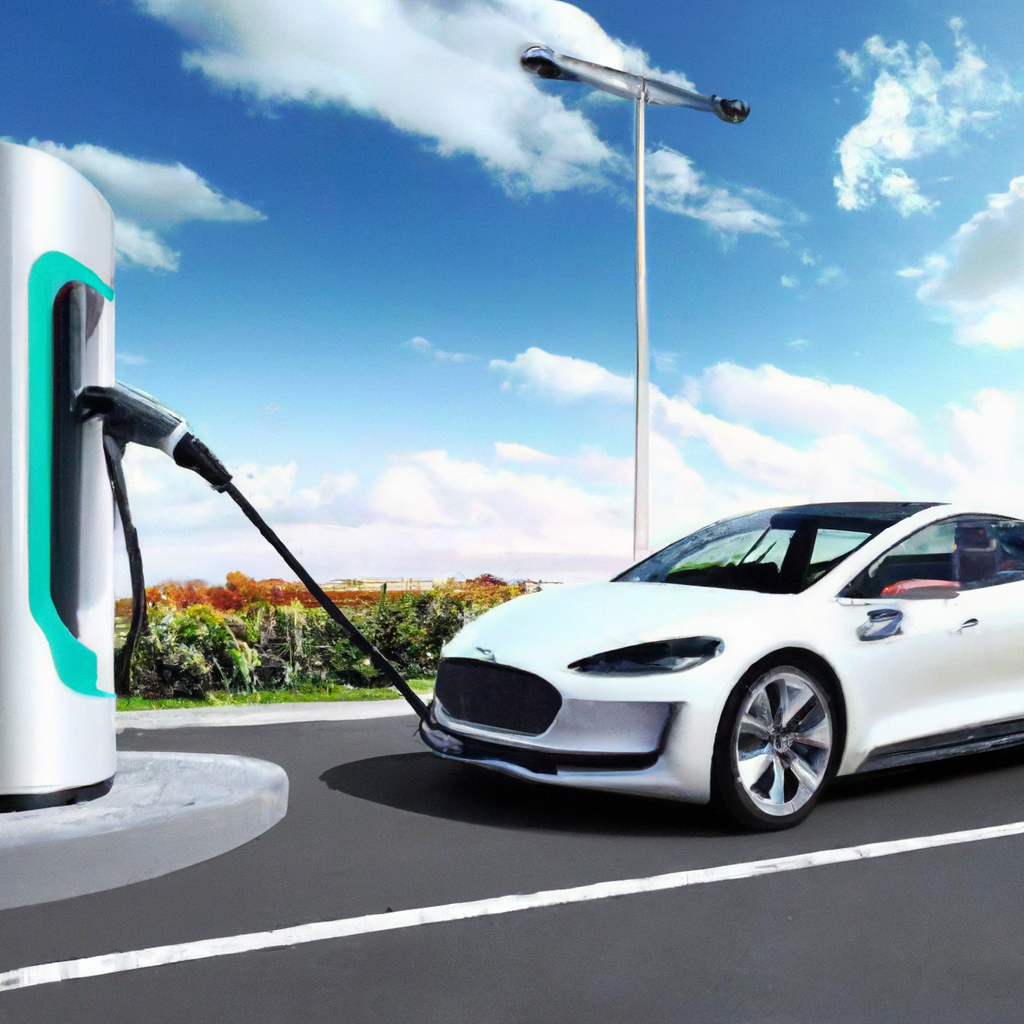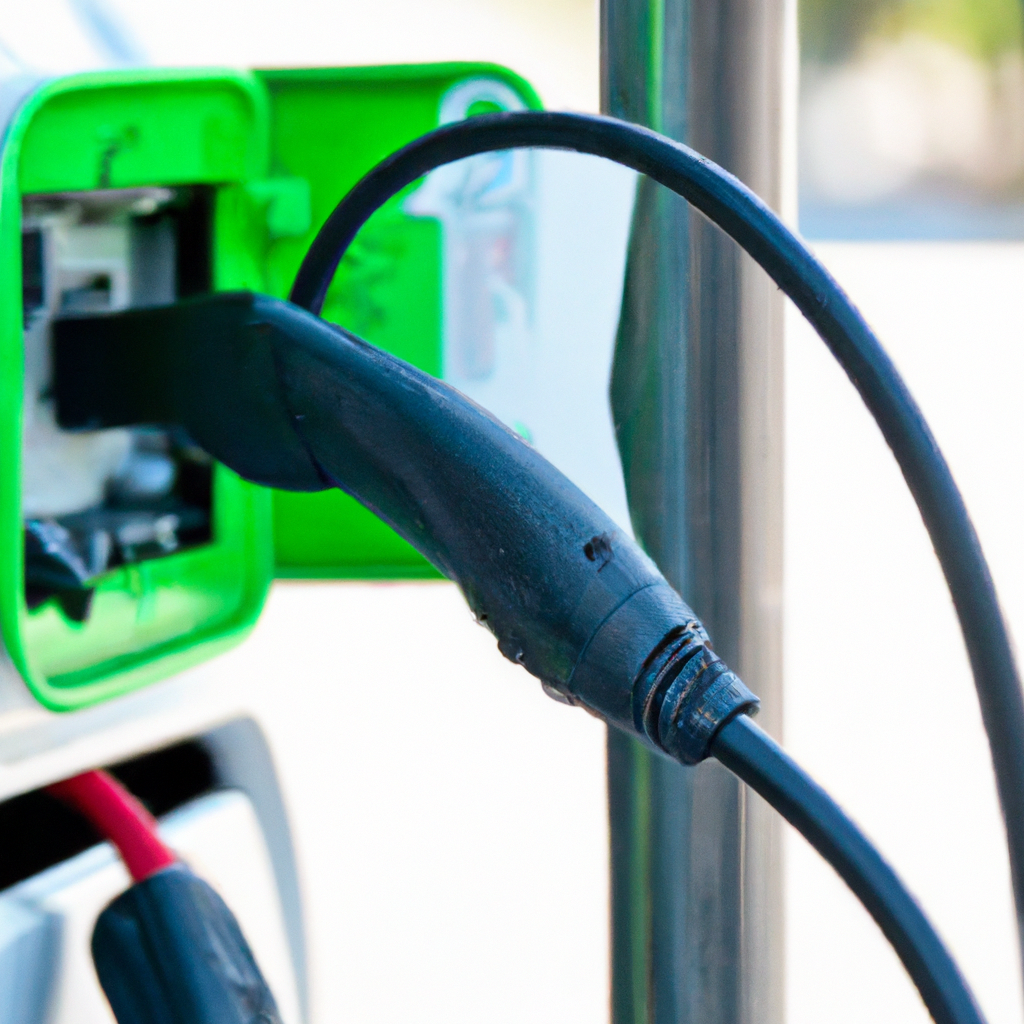
If you’re an electric vehicle (EV) enthusiast who loves going on long trips, then you know that one of the biggest challenges is finding a reliable and fast charging station along your route. You don’t want to waste hours sitting around, waiting for your car to charge. That’s why ultra-fast EV charging is becoming a game-changer for those who want to reduce their downtime on long trips. With the ability to charge your EV in a fraction of the time it used to take, you can now explore the open road with confidence, knowing that you won’t be stuck waiting for your battery to replenish. In this article, we’ll explore the advancements in ultra-fast EV charging technology and how it’s revolutionizing the way we take long trips in electric vehicles.
Introduction to Ultra-Fast EV Charging
Importance of fast charging for long trips
When it comes to electric vehicles (EVs), one of the major concerns for potential buyers is the range anxiety associated with long trips. Nobody wants to be stranded on the side of the road with a dead battery. That is where ultra-fast charging comes into play. Ultra-fast charging provides EV owners with the capability to recharge their vehicles quickly, reducing downtime and allowing for longer trips without worrying about running out of power.
Overview of the current charging infrastructure
The current charging infrastructure for EVs consists of different charging levels, namely Level 1, Level 2, and Level 3. Level 1 charging operates on a standard household outlet and is the slowest method, typically providing 2-5 miles of range per hour of charging. Level 2 charging involves dedicated charging stations and provides faster charging rates, allowing for approximately 10-20 miles of range per hour. Level 3 charging, also known as DC fast charging, is the fastest option currently available, delivering around 60-80 miles of range in just 20 minutes of charging.
Benefits of reducing downtime on long trips
Reducing downtime on long trips is crucial for the widespread adoption and acceptance of electric vehicles. With ultra-fast charging, EV owners can significantly minimize the time spent waiting for their vehicles to charge, making long journeys more feasible and convenient. Additionally, the availability of ultra-fast charging stations along major highways and in urban areas eliminates concerns about finding reliable charging infrastructure, further enhancing the overall EV ownership experience.
Understanding Ultra-Fast Charging Technologies
Difference between standard and ultra-fast charging
The main difference between standard and ultra-fast charging lies in the charging speed and the amount of power delivered to the EV’s battery. Standard charging methods, such as Level 1 and Level 2, are suitable for overnight charging at home or during extended periods of parking. Ultra-fast charging, on the other hand, employs higher power levels and advanced technologies to rapidly charge an EV’s battery, drastically reducing the time required for a full charge.
Overview of different ultra-fast charging technologies
There are several ultra-fast charging technologies being developed and deployed by various companies and organizations. One of the most popular standards is the Combined Charging System (CCS), which combines AC and DC charging capabilities and supports high-power charging of up to 350 kW. Another widely adopted ultra-fast charging technology is the Tesla Supercharger, specifically designed for Tesla vehicles, offering charging rates of up to 250 kW. Additionally, there is also the CHAdeMO standard, primarily used by Japanese automakers, capable of delivering power up to 62.5 kW.
Exploring the capabilities of high-power chargers
High-power chargers have revolutionized the charging capabilities of electric vehicles, significantly reducing the charging time. These chargers employ advanced cooling systems and intelligent power management to deliver high currents and voltages to the EV’s battery. With power levels ranging from 150 kW to 350 kW, high-power chargers can provide an additional range of up to 200 miles in just 10-15 minutes of charging. This tremendous improvement in charging speed makes long-distance travel in electric vehicles a viable and practical option.

Overcoming Challenges with Ultra-Fast Charging
Managing heat generation and dissipation
One of the primary challenges with ultra-fast charging is the generation and dissipation of heat. Rapid charging at high power levels puts a significant strain on the battery, which can lead to excessive heat buildup, potentially degrading the battery’s performance and lifespan. To mitigate this issue, manufacturers are implementing advanced cooling systems that actively regulate the battery’s temperature during charging. These systems employ liquid cooling, active thermal management, and sophisticated algorithms to optimize charging speed while keeping the battery within the safe temperature range.
Ensuring battery longevity and safety
Another challenge in ultra-fast charging is ensuring the longevity and safety of the batteries. The high currents and voltages involved in ultra-fast charging can cause stresses on the battery cells, potentially leading to accelerated degradation and reduced overall lifespan. Battery management systems (BMS) play a crucial role in monitoring and controlling the charging process to prevent overcharging, over-discharging, and excessive heat generation. Additionally, advancements in battery chemistry and cell design are being pursued to develop batteries that can withstand the demands of ultra-fast charging while maintaining safety and longevity.
Addressing grid capacity and power supply challenges
Ultra-fast charging places a significant demand on the electrical grid, requiring large amounts of power to be available at charging stations simultaneously. To address this challenge, collaboration between charging station operators and utility companies is essential. Innovations in grid integration and energy management systems are being explored to optimize the utilization of renewable energy sources and ensure a reliable power supply for ultra-fast charging infrastructure. Moreover, strategic placement of charging stations along major highways and in urban areas can help alleviate grid capacity constraints.
Advancements in Ultra-Fast Charging Infrastructure
Innovations in charging station design
As the demand for ultra-fast charging increases, innovations in charging station design are constantly being developed. Modular and scalable charging solutions are gaining popularity, allowing for easy expansion and adaptability to varying power requirements. Some charging stations now feature multiple charging points, enabling simultaneous charging of multiple vehicles. Additionally, charging stations are also incorporating user-friendly interfaces and advanced payment systems to enhance the overall charging experience for EV owners.
Integration of renewable energy sources
To reduce the environmental impact of charging infrastructure, the integration of renewable energy sources is paramount. Solar panels and wind turbines can be installed alongside charging stations to generate clean energy for charging EVs. This not only reduces the carbon footprint associated with charging but also provides a more sustainable and resilient power supply for ultra-fast charging. The combination of renewable energy sources and energy storage systems offers the potential for off-grid charging solutions, bringing ultra-fast charging to remote locations without relying solely on the electrical grid.
Emerging technologies for boosting charging speeds
The race to develop even faster charging speeds is ongoing, driving the emergence of new technologies. Solid-state batteries, which offer higher energy densities and faster charge and discharge rates, have the potential to revolutionize ultra-fast charging. Similarly, advancements in materials such as silicon anodes and lithium-metal anodes can increase the charging capabilities of batteries. Furthermore, wireless charging technologies, utilizing magnetic resonance or inductive coupling, are being explored to remove the physical connection between the charging station and the EV, providing added convenience and ease of use.

Ultra-Fast Charging Networks and Partnerships
Collaborations between automakers and charging station providers
To accelerate the deployment of ultra-fast charging infrastructure, collaborations between automakers and charging station providers are crucial. By working together, these partners can establish standardized charging protocols, ensure interoperability among different EV models and charging stations, and drive the development of advanced technologies. Such partnerships also enable the expansion of charging networks, making it more convenient for EV owners to access ultra-fast charging facilities.
National and international charging networks
National and international charging networks play a pivotal role in the proliferation of ultra-fast charging. These networks connect charging stations across different regions, ensuring seamless charging experiences for EV owners on long trips. Government support, incentives, and regulations are often instrumental in the establishment and growth of these charging networks. Cross-border collaborations and standardization efforts further enhance the accessibility and ease of use of ultra-fast charging infrastructure on a global scale.
Incentives and support for expanding charging infrastructure
Recognizing the significance of ultra-fast charging in promoting electric mobility, governments and organizations worldwide are providing incentives and support for expanding charging infrastructure. Financial incentives, such as grants, tax credits, and subsidies, are offered to encourage the installation of charging stations. Additionally, streamlined permitting processes and favorable regulations contribute to the rapid deployment of ultra-fast charging infrastructure. Public-private partnerships and investment initiatives also play a vital role in fostering the growth and accessibility of charging networks.
The Future of Ultra-Fast EV Charging
Roadmap for further advancements in charging technology
The future of ultra-fast EV charging holds immense potential for further advancements in technology. Researchers and engineers are continuously working towards increasing charging speeds, improving battery performance, and developing innovative charging solutions. This includes the use of higher voltages, higher currents, and improved cooling technologies. Additionally, standardization efforts and collaborations among industry stakeholders will drive the development of a robust and efficient ultra-fast charging ecosystem.
Potential impact on electric vehicle adoption
The availability of reliable and convenient ultra-fast charging infrastructure has a profound impact on the adoption of electric vehicles. As charging times decrease and long-distance travel becomes more feasible, the perceived limitations of electric mobility are quickly diminishing. With ultra-fast charging, consumers can confidently choose electric vehicles as their primary mode of transportation, leading to a significant reduction in fossil fuel consumption, greenhouse gas emissions, and overall environmental impact.
Integration with autonomous driving and smart grid systems
As the automotive industry evolves, the integration of ultra-fast charging with autonomous driving and smart grid systems is becoming increasingly important. Autonomous vehicles can leverage ultra-fast charging to optimize their operational efficiency by reducing charging times and maximizing uptime. Additionally, smart grid systems can dynamically manage and balance the power demand of charging stations, taking advantage of renewable energy sources and minimizing strain on the electrical grid. The synergy between these technologies will pave the way for a more sustainable and interconnected transportation ecosystem.

Best Practices for Ultra-Fast Charging on Long Trips
Planning a route with reliable charging stations
When embarking on a long trip in an electric vehicle, it is crucial to plan the route carefully, taking into account the availability of reliable ultra-fast charging stations along the way. Numerous online tools and mobile applications provide real-time information about charging station locations, availability, and compatibility with different EV models. By mapping out the charging stops in advance, you can optimize your journey and minimize the time spent searching for compatible charging infrastructure.
Optimizing driving and charging times
To make the most of ultra-fast charging capabilities, it is essential to optimize both driving and charging times. Maintaining a consistent speed and practicing efficient driving habits, such as avoiding aggressive acceleration and braking, can help extend your vehicle’s range. Additionally, taking advantage of downtime opportunities, such as meal breaks or sightseeing, while your vehicle is charging can further reduce overall travel time.
Maintaining battery health during frequent fast charging
Frequent ultra-fast charging can have an impact on the health and longevity of your EV’s battery. To ensure optimal battery performance, it is recommended to avoid repeatedly charging your battery to 100% or depleting it to 0%. Instead, aim for a charging range between 20% and 80% to reduce stress on the battery cells. Additionally, giving your battery occasional slower and longer charges, such as Level 2 charging at home, can help balance cell capacities and maintain overall battery health.
Case Studies: Successful Implementation of Ultra-Fast Charging
Case study 1: High-speed charging along major highways
One successful implementation of ultra-fast charging infrastructure can be seen along major highways in countries like Germany and the United States. These charging networks consist of strategically placed ultra-fast charging stations, allowing EV owners to conveniently recharge their vehicles during long trips. The collaboration between automakers, charging station providers, and government entities has enabled the rapid deployment of these charging networks, addressing range anxiety and promoting the adoption of electric mobility.
Case study 2: Ultra-fast charging infrastructure in urban areas
In densely populated urban areas, the implementation of ultra-fast charging infrastructure presents its own set of challenges and opportunities. In cities like Amsterdam and Seoul, efforts are being made to install charging stations at key locations, such as parking garages, shopping centers, and business districts. This allows EV owners to conveniently charge their vehicles while going about their daily activities. By integrating charging infrastructure seamlessly into urban landscapes, these cities are fostering the growth of electric mobility and reducing the reliance on traditional gasoline-powered transportation.
Case study 3: EV charging networks in countries leading the transition
Some countries, such as Norway and the Netherlands, have taken significant steps towards transitioning to electric mobility and reducing their carbon footprint. These countries have implemented comprehensive EV charging networks that encompass all types of charging, including ultra-fast charging. The widespread availability of charging stations, along with incentives and support from the government, has resulted in a substantial increase in electric vehicle adoption. These successful case studies serve as inspiration and provide valuable lessons for other countries looking to accelerate their transition to electric mobility.

Overcoming User Concerns and Misconceptions
Addressing range anxiety and charging time concerns
Range anxiety and charging time concerns are two significant barriers to the widespread adoption of electric vehicles. However, ultra-fast charging is playing a crucial role in addressing these concerns. With ultra-fast charging capabilities, EV owners can rapidly recharge their vehicles during long trips, minimizing range anxiety. Moreover, the advancements in charging infrastructure and reduction in charging times are gradually eradicating the perception that electric vehicles are inconvenient or time-consuming to charge.
Promoting awareness and education about ultra-fast charging
To dispel misconceptions and increase awareness about the benefits of ultra-fast charging, educational efforts are essential. Car manufacturers, charging station providers, and government organizations can collaborate to educate the public about the latest technology advancements, charging capabilities, and the overall user experience of ultra-fast charging. This can be done through informative campaigns, online resources, and EV-focused events, allowing potential EV owners to make more informed decisions and embrace electric mobility.
Dispelling myths surrounding battery degradation and safety
There are several myths surrounding battery degradation and safety related to ultra-fast charging. Some people believe that frequent ultra-fast charging can significantly degrade battery performance or pose safety risks. However, advancements in battery technology and the implementation of robust battery management systems have greatly minimized these concerns. Properly designed ultra-fast charging infrastructure and adherence to recommended charging practices ensure the longevity and safety of EV batteries, dispelling any misconceptions and promoting confidence in ultra-fast charging.
Conclusion
In conclusion, ultra-fast EV charging is poised to revolutionize long-distance travel and increase the adoption of electric vehicles. By significantly reducing charging times, ultra-fast charging eliminates range anxiety and promotes convenience for EV owners. Advancements in charging technology, battery management, and supporting infrastructure are continuously being made to overcome challenges and enhance the overall charging experience. With collaborative efforts, strategic deployments, and continued innovation, the future of ultra-fast EV charging looks bright. As this technology becomes more widespread, the vision of sustainable and emission-free transportation is becoming a reality. Electric mobility is no longer a distant dream but a promising and accessible reality for the future of transportation.

RELATED POSTS
View all


